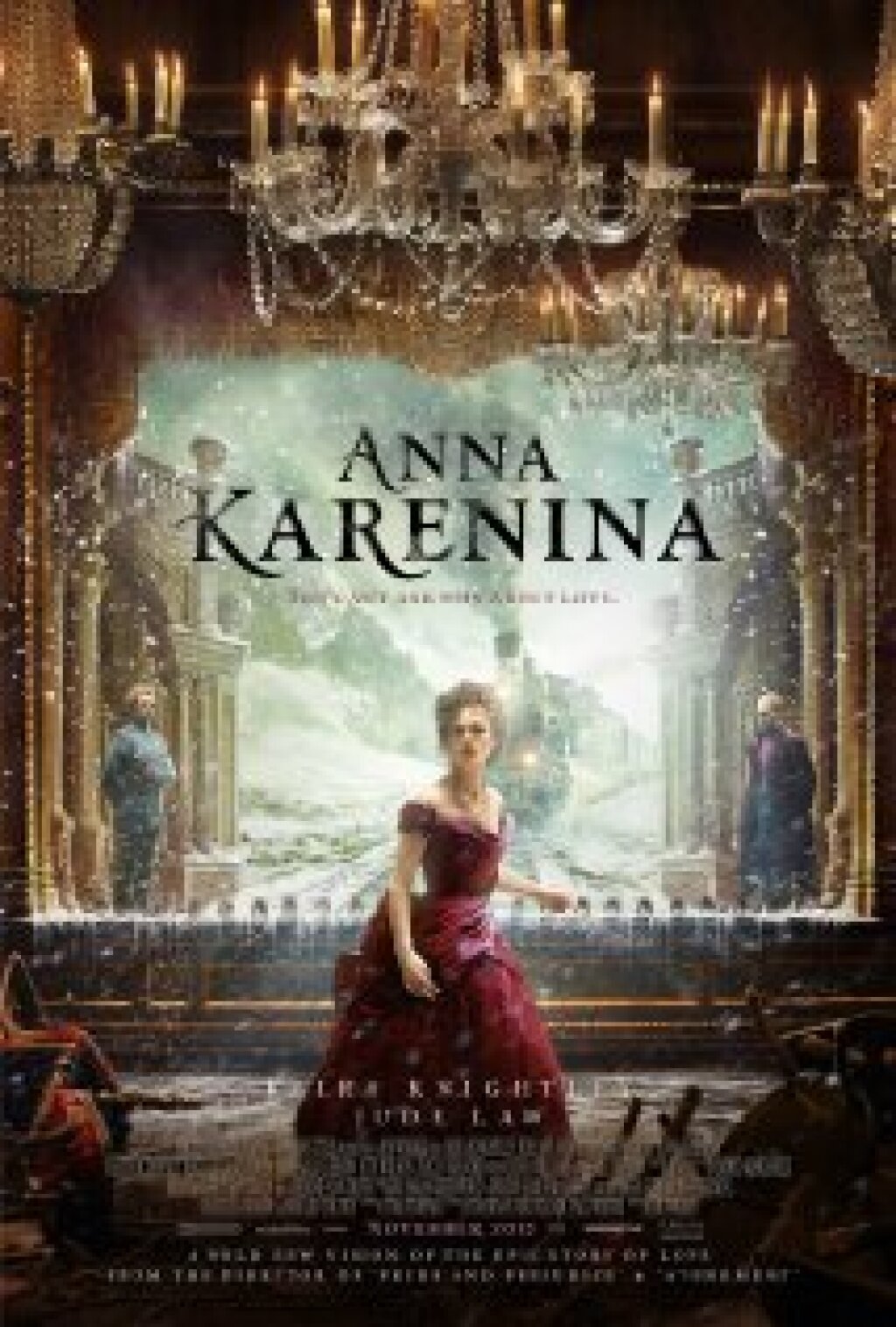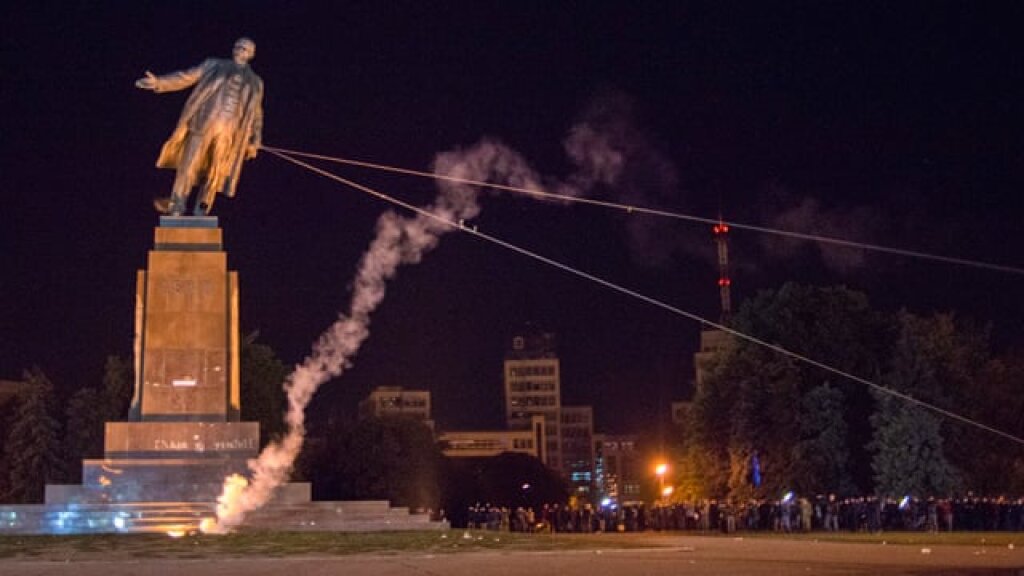Ani Kokobobo is an Assistant Professor of Slavic Languages and Literatures at the University of Kansas
Responding to a 1997 film adaptation of Anna Karenina, Australian novelist Helen Garner declared that the novel was “by its very nature… not adaptable” because Tolstoy’s authoritative narrative voice could not be translated to the screen (1997, B27).[1] Questions of adaptability arise again in director Joe Wright’s Anna Karenina, a deftly stylized cinematic abridgement of Tolstoy’s classic novel starring Keira Knightley as the eponymous Anna. Based on a screen treatment penned by Tom Stoppard, the film eschews the sepia-tone presentation of similar period-films in favor of theatrical façade, re-creating Tolstoy’s nineteenth-century through stagecraft, spectacle and the inspired eye of cinematographer Seamus McGarvey (Atonement, The Hours). Despite flaws of both execution and interpretation, this most recent adaptation displays a genuinely intelligent understanding Tolstoy’s novel. Stoppard is no reverential consumer of the original; rather, to borrow a term from Ronald Barthes, he has undertaken a “writerly” project that gives the novel a new spin. If we look beyond traditional expectations of fidelity, this rewriting of Tolstoy seems like a fascinating spectacle in its own right.
Anna Karenina is filmed primarily indoors in a theatrum mundi – a world made up of stage-pieces. Moveable backdrops denote St. Petersburg and Moscow. Scene changes are punctuated by wardrobe changes. As actors move through the world, the spaces they inhabit are rapidly repurposed. In one notable case, Stiva Oblonsky’s dreary bureaucratic workplace quickly transforms into the glamorous “Hermitage” as copyists turn into waiters. Occasionally this staging feels too deliberate and the story itself suffers from a preponderance of choreographed dance sequences. Most of the action is confined to the theatrum mundi, except for a few brief exterior scenes, almost all of which depict Levin at Pokrovskoe and the Karenin Peterhoff country house, with the notable exception of Anna and Vronsky’s (Aaron Taylor-Johnson) love-making, which is depicted variously in the light of day or in daydream montage. Considering the careful labyrinth of linkages in the novel proper, one might view these scenes as connected by their greater naturalness, with the implication that, in their affair, Anna and Vronsky manage to break free from the constructs of the stage-world, as does Levin upon leaving Moscow for Pokrovskoe, rejected by Kitty but liberated in himself.
The characters that populate the film’s city spaces appear stiff and one-dimensional and, in this context, the film’s obsession with artifice seems justified; depicting urban life as a construct makes sense given Tolstoy’s contempt for city living. Indeed, the theatricality of the movie may be seen as equivalent to Tolstoy’s famous device of estrangement (ostranenie). According to Victor Shklovsky, estrangement allowed Tolstoy to view the world through a child’s eyes and expose the unnaturalness of social convention. In the film, this same role is fulfilled by the artifice of theatricality – the theatrum mundi is a constant reminder that characters inhabiting this world are prisoners of convention.
The dichotomy between authenticity and convention is further complicated when, the end of the film, an invisible hand pulls the curtain, showing Karenin in a field with Annie and Seryozha that turns into yet another elaborate stage. This final reveal suggests that Anna Karenina, as a film, may be most concerned with telling an old story through a postmodern narrative. “Simulation is no longer that of a territory, a referential being, or a substance,” writes Baudrillard. “It is the generation by models of a real without origin or reality: a hyperreal” (1).[2] In some respects, Stoppard and Wright have taken Tolstoy’s novel, replete with the author’s predilection for authenticity, and turned it into a story about hyperreality – where inauthenticity is as inherent as the movie’s stage sets that cannot be escaped. While it may seem as though Levin has achieved a more authentic existence in his Pokrovskoe with Kitty and baby Mitya, or that Anna and Vronsky’s affair is imbued with a Tolstoyan naturalness through sex, both relationships began within the confines of the societal stage and the film at least implies that, in the end, they remain staged.
If we consider the theatricality in Wright’s interpretation of the novel as a kind of gesture toward the hyperreal, then it is perhaps only appropriate that this version of the story seems so singularly preoccupied with love, as opposed to death, which was just as important to Tolstoy. As Baudrillard argues, in the hyperreal “death itself shines by virtue of its absence,” and is met with indifference when it occurs (164). The suicide at the beginning of the novel is rendered theatrically. His death is colorful, as is Anna’s. Dying under the weight of the train, which runs across the middle of the stage, Anna remains as beautiful as before. After the spectacle of her decline and death, it seems appropriate that the grief felt by Vronsky and his own implied suicide are completely written out. Levin’s own struggles with suicidal thoughts are not even hinted at. These and other omissions can feel jarring to the lover of the novel, but they fit with the overall tenor of the film.
Overall, the viewer’s reaction to this film will depend largely on expectations. The new Anna Karenina film is bound to displease if evaluated exclusively in terms of fidelity to the original. Engaging the film on its own terms, however, we might note it has its virtues. More than anything, the creative team should be praised for successfully modernizing a classic adapted numerous times, and doing so without any androids (Android Karenina), zombies (Pride, Prejudice, and Zombies), or vampire hunters (Abraham Lincoln Vampire Hunter).
Ani Kokobobo
University of Kansas
[1] I was directed to this quotation by Brian McFarlane’s essay “It Wasn’t Like That in the Book” in The Literature/Film Reader, Eds. James Welsh, Peter Lev, (Lanham, MD: Scarecrow Press Inc., 2007), 3-14.
[2] Simulacra and Simulation (Ann Arbor: University of Michigan Press, 1994).



